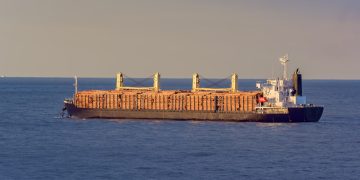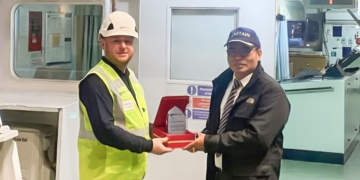Transport Malta issued an investigation report on the serious injury of a crew member during mooring operations in the port of Marsaxlokk, Malta, in May 2020. The accident occurred when one of the stern lines parted and struck the third officer on the poop deck.
The incident
The ship Mount Everest was mooring at Has-Saptan Fuelling Dolphin, within the port limits of Marsaxlokk, Malta, with a pilot onboard.
At the aft mooring station, the mooring team noticed that one of the lines was tight, while the other was still slack. Whilst trying to equalize the tension on both lines, the taut line parted and struck the third officer.
Consequently, he suffered from serious facial injuries and was transferred to a hospital ashore, as soon the vessel was safely moored alongside.
Probable causes
[smlsubform prepend=”GET THE SAFETY4SEA IN YOUR INBOX!” showname=false emailtxt=”” emailholder=”Enter your email address” showsubmit=true submittxt=”Submit” jsthanks=false thankyou=”Thank you for subscribing to our mailing list”]
The safety investigation revealed that the breaking strength of the mooring rope had decreased by more than 50% of its certified MBL. Moreover, the stresses in the rope, due to friction and the angles at which it was led during this mooring operation, contributed to the accident.
Conclusions
- The accident occurred when one of the stern lines parted and struck the third officer on the poop deck.
- A breaking test of the rope, conducted after the accident, revealed that its strength had decreased by more than 50% of its certified MBL.
- It was hypothesized that the rope’s external and internal fibres may have deteriorated due to abrasion/friction and/or chemical contamination.
- It is also highly likely that the stresses induced in the rope, due to internal friction and chaffing during this mooring operation, were contributory factors to this accident.
- The aft mooring configuration deployed for this operation was not supported by the vessel’s mooring design.
- The crew members found it difficult to shift the mooring rope passed from the forward split-drum onto its tension section due to the large fleeting angle of the rope and the height of the pedestal fairlead around which it was passed.
- The crew members’ attention was shifted on the mooring rope passed from the forward split-drum, which was not yet under tension. During this time, the rope passed from the aftermost split-drum took all the weight generated by the forward drift of the vessel.
- It is very likely that there was a breakdown in communication during the discussion on the mooring configuration.
- It is also likely that the intended mooring configuration would have been difficult to apply, considering the heights and distances between the mooring equipment on the poop deck.
A mooring rope’s fibres would be prone to deterioration, and thus a reduction in the overall strength (MBL) due to:
- regular abrasion of the rope’s external fibres caused by rubbing against hard surfaces, or even other ropes (chafing);
- abrasion of the rope’s internal fibres caused by friction between rope strands, generating heat and causing the fibres to melt;
- exposure to environmental factors, such as sea water, rainwater and ultraviolet radiation over a period of time, which would affect both the external as well as internal fibres;
- contamination of the ropes internal and external fibres by chemicals, such as acids, alkalis, paint, thinners, etc.;
- tensile fatigue, which is caused by regular friction between the rope’s internal fibres, over a long period of use within the rope’s limits. Tensile fatigue may be accelerated by the salt in sea water; and
- shock loads experienced during a particular mooring operation.
Actions taken
During the safety investigation, the Company took the following safety actions, intended to prevent similar accidents onboard its fleet, as follows:
1.Amended its internal shipboard audit procedures to include a mooring operations audit.
2. Circulated its internal investigation report and issued a Fleet Safety Bulletin on safe mooring operations. 12 Safety actions and recommendations shall not create a presumption of blame and/or liability.
3. The generic risk assessment for mooring operations was revised to emphasize clear communication procedures, minimum number of mooring team members required, and the importance of supervision and overview.
4. The Company’s procurement procedures were revised so that only mooring ropes with the latest snapback-arrestor technology would be ordered.
5. Procedures were introduced to have one rope per ship tested for residual strength on an annual basis.
6. Conducted additional training for mooring operation onboard its fleet.
7. Moreover, the following preventive measures have been adopted:
- A minimum manning requirement has been introduced at the mooring stations, depending on the complexity of the mooring operation, the outcome of the risk assessment exercise, available experience and/or port requirements;
- A maximum lifespan of five years has been established for soft mooring ropes, with a turnover end-to-end requirement of 2.5 years;
- Snapback arrestor ropes have been introduced; d. Initiated and performed campaigns on safe mooring operations and introduced a ‘stop work authority’ programme;
- Initiated training for shore and onboard personnel on the inspection and maintenance of mooring ropes.
8. Amended Company procedures to ensure that VDR data is also saved following similar accidents.
9. The SMS Manual has been amended to include references to industry standards concerning the inspection of mooring ropes.

































































